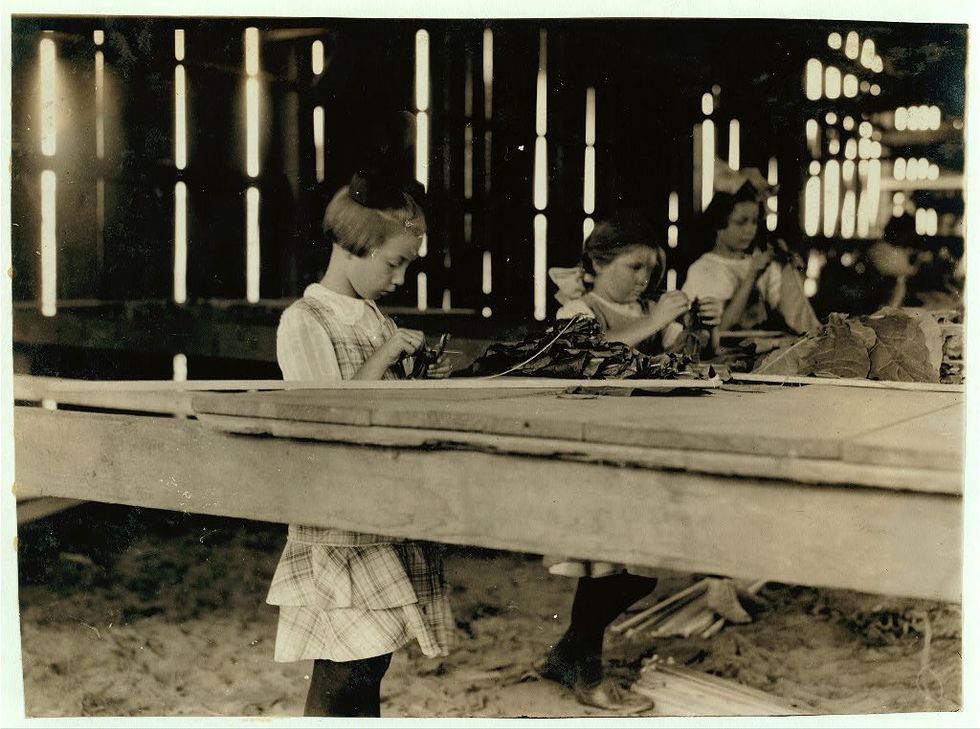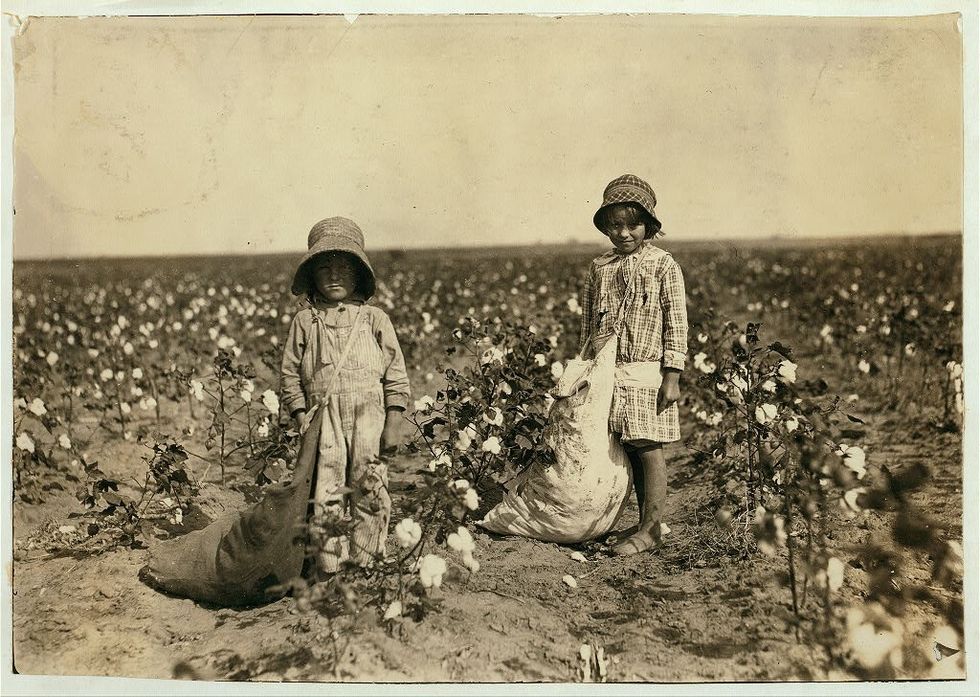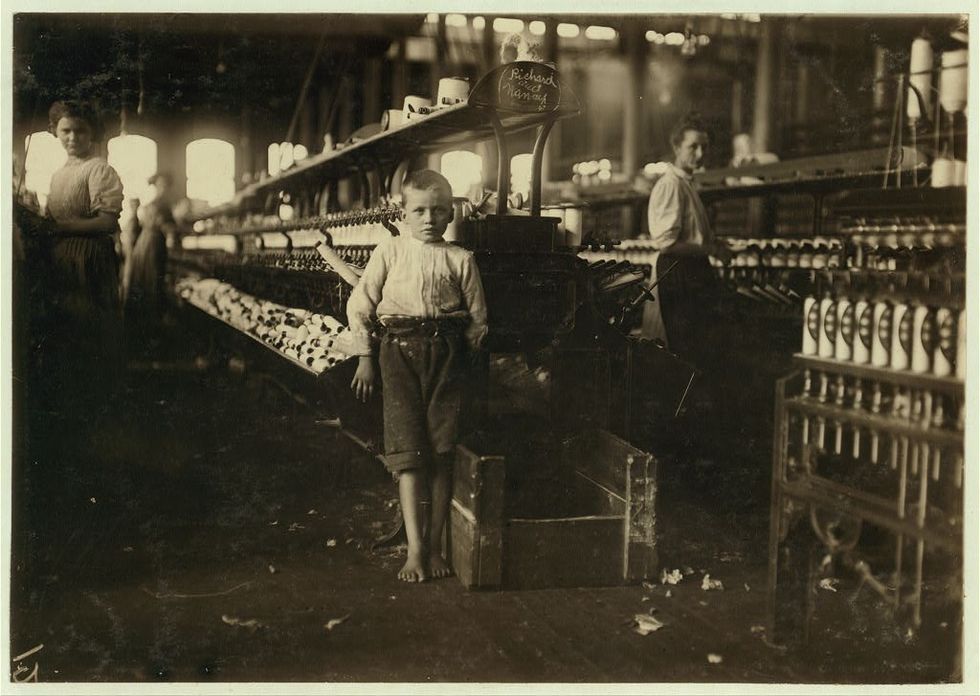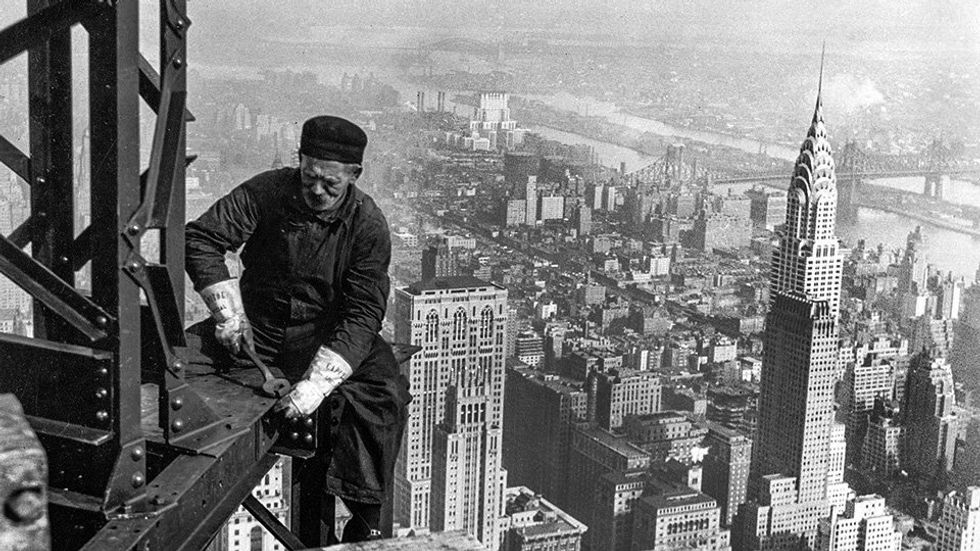

SUBSCRIBE TO OUR FREE NEWSLETTER
Daily news & progressive opinion—funded by the people, not the corporations—delivered straight to your inbox.
5
#000000
#FFFFFF
To donate by check, phone, or other method, see our More Ways to Give page.


Daily news & progressive opinion—funded by the people, not the corporations—delivered straight to your inbox.
Trump’s Congo-Rwanda Peace Accord is an affront to Congolese human rights and sovereignty.
After the signing of the so-called peace agreement between Rwanda and Congo on June 27, U.S. President Donald Trump took a victory lap. “This is a Great Day for Africa and, quite frankly, a Great Day for the World! I won’t get a Nobel Peace Prize for this... but the people know, and that’s all that matters to me!” he posted. The agreement, heralded as a breakthrough ending more than three decades of violence in Congo, was quickly praised by powerful institutions in the West, including the United Nations and the European Union.
There’s no question that peace in Congo is a desperately needed goal. Since 1996, war in the country has killed nearly 6 million people and displaced over 7 million. More than 21 million require humanitarian assistance, and in 2023 alone, the U.N. recorded over 133,000 cases of sexual violence, almost certainly a significant undercount.
However, while world leaders and celebratory headlines applaud the deal, violence continues to rage in the eastern Congo. The deal will not end this suffering; instead, it prioritizes Western private interests over peace, justice, and dignity for the Congolese people, serving as a blueprint for resource extraction and continued violence in the country rather than a true diplomatic success.
The deal, while ostensibly aimed at ending hostilities, places a heavy emphasis on mineral exploitation, leading Congolese civil society to question its true purpose. Nobel Peace Prize laureate Dr. Denis Mukwege has denounced it for “legitimizing the plundering of Congolese natural resources,” a concern supported by the agreement’s inclusion of a clause committing signatories to “launch and/or expand cooperation on… formalized end-to-end mineral value chains… with the U.S. government and U.S. investors.” Upon the release of the Declaration of Principles that laid the deal’s foundations, the International Crisis Group noted that the deal reads “partly like a framework for ending a conflict and partly like a commercial memorandum.”
It is highly unlikely that the deal will bring a just and lasting peace to Congo. Though a potential cease-fire was announced between the Congo government and M23, the conflict’s largest rebel group, experts say that M23 has already broken the agreement while serious implementation challenges remain. M23 has left withdrawal—and, thus, a true and lasting end to the conflict—out of the question, telling reporters they “will not retreat, not even by one meter.” Meanwhile, over 100 other armed groups continue to fight in the east. On July 23, the U.N. condemned three recent deadly attacks by groups not party to the agreement.
More troublingly, the deal grants Rwanda a green light to continue looting Congolese resources, furthering a central driver of the conflict. By backing M23, Rwanda has taken control of Congolese mines, and committed widespread human rights abuses. Up to 90% of its coltan exports are believed to be illicitly smuggled from eastern Congo, funding armed groups. The accord, which invites Rwanda into a “regional economic integration framework,” legitimizes this theft and proxy warfare.
Rwandan President Paul Kagame doesn’t seem ready to scale back this influence. Just days after the agreement was signed, he cast doubt on the peace process, telling reporters, “If the side that we are working with plays tricks... then we deal with the problem like we have been dealing with it.”
Today, the Congolese people endure violence not only from armed conflict but also from systemic exploitation, through forced labor, environmental destruction, and land seizures. The scramble for Congo’s mineral wealth has forced tens of thousands of children into dangerous mines, polluted and devastated ecosystems, and displaced entire communities from their homes.
A recent policy brief by the Oakland Institute lays bare how, through handing over Congolese mineral wealth to a web of U.S.-aligned corporate actors and billionaire investors, Trump’s peace deal will deepen the ravages of the country’s mining industry, leaving the Congolese people to pay the price.
The list of the deal’s likely beneficiaries is a veritable who’s-who of Trump-linked billionaires: Bill Gates, Jeff Bezos, Michael Bloomberg, Sam Altman, Elon Musk, Marc Andreessen, and Ben Horowitz, among others. Also on it are mining giants like Ivanhoe Mines, Rio Tinto, and Glencore.
The accord threatens to entrench this cyclical poverty and violence in service of enriching behemoth mining firms and Trump’s billionaire friends.
The track records of these companies undermine any claim that Trump’s deal is about peace for the Congolese people. Ivanhoe Mines’s cochair Robert Friedland once ran Galactic Resources, responsible for one of the worst mining-related environmental disasters in U.S. history. He has already been exposed for harmfully evicting Congolese families to expand his new operations in the Congo. Rio Tinto, notorious for sparking a civil war in Papua New Guinea and for destroying a 46,000-year-old sacred Aboriginal site in Australia, is now eyeing Congo’s Manono Lithium Deposit. Glencore has been fined over $1 billion for abuses in its African mines and maintains illicit financial ties to sanctioned Israeli billionaire Dan Gertler. Both Ivanhoe and Rio Tinto are reportedly set to join a forthcoming minerals agreement tied directly to the deal’s economy-driven clauses.
Lacking the infrastructure to process its own resources, Congo remains trapped in a cycle where foreign actors siphon off its $24 trillion in mineral wealth while its citizens remain among the poorest in the world. Compounding that systemic inequality, both corporate and artisanal mines enact severe human rights abuses and environmental devastation on the Congolese people, injustices that the agreement appears likely to bolster as it opens the door to firms perpetrating them against communities around the globe. In doing so, the accord threatens to entrench this cyclical poverty and violence in service of enriching behemoth mining firms and Trump’s billionaire friends.
Despite what he may think, or wish, Donald Trump deserves no applause for this “peace agreement” because the agreement itself is misnamed. Its focus has never been peace, but rather profit, and his attempt to launder it into something more benevolent is transparently disingenuous.
Without a radical shift, Trump’s deal will likely achieve exactly what it was intended for, funneling billions to already wealthy oligarchs and multinational corporations while sidelining the communities forced to live with its consequences.
"It's really urgent that we address our federal standards and raise them for children across the country," a co-author said.
A number of mostly Republican-controlled states have weakened child labor protections in recent years and a second Trump administration would likely escalate the deregulatory push, as per plans laid out in Project 2025, according to a report released Wednesday.
The 55-page report, Protecting Children From Dangerous Work, was prepared by Governing for Impact, the Economic Policy Institute, and Child Labor Coalition. It includes harrowing stories of teenagers killed on the job, documents right-wing plans for increased minor involvement in dangerous work, and calls for action by the U.S. Labor Department to strengthen and codify legal protections for workers under age 18.
Child labor violations in the U.S. nearly quadrupled between 2015 and 2022, according to Labor Department data.
The new report documents right-wing efforts to loosen child labor protections, particularly in the past four years, during which time lawmakers in 30 states have moved to do so. At least eight states—Florida, Idaho, Indiana, Iowa, Kentucky, Minnesota, Missouri, and West Virginia—have tried to roll back protections on child labor hours or hazardous work just since the start of 2023, the report says.
"At the time when we're seeing violations on the rise, and we're simultaneously seeing states go back on their commitment to raising standards to be above federal minimums, I think it's really urgent that we address our federal standards and raise them for children across the country who may be working in hazardous environments or in an environment that is not appropriate for someone of their age," Nina Mast, an analyst at the Economic Policy Institute and a co-author of the report, told The Guardian.
The policy agenda of Project 2025, a 920-page manifesto which many observers consider a blueprint for a second Trump administration, includes explicit mention of child labor issues. Many of the authors worked for Republican presidential nominee Donald Trump during his first administration.
The chapter on the Labor Department, written by Jonathan Berry, who himself worked in the department under Trump, says that "some young adults show an interest in inherently dangerous jobs" and that "with parental consent and proper training, certain young adults should be allowed to learn and work in more dangerous occupations."
The right-wing push to deregulate child labor has led several states to adopt laws that are below federal standards established by the Fair Labor Standards Act, leading to confusion for employers and employees, the new report says.
Agriculture is a sector where child labor is particularly common and is subject to its own regulations. The Obama administration tried to push through legal protections for minors in the sector in 2012 but met with major resistance from industry groups.
Still, even without further action from Congress, the Labor Department has the authority to strengthen protections for minors in agriculture and other sectors, the report authors argue. In the 2000s, the National Institute for Occupational Safety and Health issued a series of recommendations on child labor, some of which the department didn't implement—but still could, they wrote.
A detailed investigation by The New York Times last year showed that much of the exploitation of child labor, both in farms and factories, is targeted at migrants.
The new report cites a particularly awful example of the dangers of such exploitation. In July 2023, Duvan Thomas Pérez, a 16-year-old, was working as a cleaner at a chicken processing plant in Mississippi—as he did on nights after school—when a moving component of a machine drew him in and killed him. He was employed in violation of current law, the report says, pointing to the need for better enforcement of the rules already on the books.
The influential photographer—born 150 years ago this week—sought to present his subjects as people with pride and dignity, often tough and defiant, who held out hope for a better world.
The sky had not yet begun to brighten on a chilly February morning in 1911 when the first workers arrived at the seafood cannery in Biloxi, Mississippi. Slipping in after them was a slender man carrying cumbersome camera equipment. Photographer Lewis Hine was not allowed in the cannery. But he had no qualms about sneaking in at five in the morning, as he knew the managers would not arrive until hours later. He would return again at noon in a rowboat, tying up to the cannery dock, to get within striking distance of his subjects.
One was Manuel, who, at just five years old, was already a veteran shrimp picker. In the photograph taken by Hine, Manuel is round-cheeked and round-tummied, with a serious expression. Barefoot, he stands facing the camera, dressed in a checkered shirt, short pants, and a soiled apron, wearing a fisherman’s cap on his head. In each hand he holds a strainer pot. Behind him is an immense mound of oyster shells.
Hine had traveled to Biloxi on behalf of the National Child Labor Committee, a group formed in 1904. One of the greatest documentary photographers, Hine journeyed to factories, mills, fields, and mines to document how America’s children toiled. His images played a major role in the enactment of child labor laws in the United States.
Hine—who was born 150 years ago, on September 26, 1874—pioneered the use of photography as part of crusades for social reform. Now is a good time to recall Hine’s efforts as part of the broader movement to improve the conditions of children at work, in school, and in housing. In the past few years, America’s business lobby has sort to reverse that progress and roll back protections, according to the Economic Policy institute. This year alone, six states—Alabama, Florida, Indiana, Iowa, Kentucky, and West Virginia, enacted legislation to weaken child labor protections, despite an increase in child labor violations. These and other states have been trying to roll back rules that deal with youth work permits, work hours and rest breaks, and protections from hazardous work in response to lobbying campaigns by the restaurant, construction, hospitality, grocery, and farm industries. Other states, however, are pushing to strengthen laws.

Lewis Hine was born in Oshkosh, Wisconsin, above a popular Main Street restaurant that his parents owned. His father died when Lewis was seventeen years old. He worked as a hauler at a furniture factory, toiling thirteen hours a day, six days a week, to help support his mother and sister. But in 1893, during an economic downturn, the factory closed. He picked up odd jobs, splitting firewood and making deliveries. (Delivery boys were later a favorite subject in his work.) When he was hired as a bank janitor, he studied stenography at night and was promoted to secretary.
Hine’s life began to change when he met Frank Manny, who became his mentor, introducing him to the ideas of John Dewey and, later, Felix Adler, the founder of the Ethical Culture movement. Hine enrolled at the teachers’ college in Oshkosh, where Manny taught, and then spent a year at the University of Chicago. When Manny became superintendent of the Ethical Culture School in New York City, he offered Hine a job teaching geography and natural history. While teaching, Hine completed his degree in education at New York University.
The Ethical Culture School, founded by Adler, was progressive and experimental. It based its curriculum on humanist values that helped lay the groundwork for Hine’s future work. Although Hine had never picked up a camera before, Manny suggested he become the school photographer. He took pictures of school activities, set up a dark room, and started a camera club.
Manny used Hine’s emerging photography skills to teach students about social conditions, in particular the conditions facing the waves of immigrants coming through Ellis Island. Manny urged Hine to portray the dignity and worth of the newcomers, in part to help counter a growing anti-immigrant sentiment. Hine, with Manny as his assistant, lugged his rudimentary photography equipment to Ellis Island. He never photographed people without their permission, and in the cacophony of languages, he had to pantomime his requests to take a picture. Using an old box camera, glass-plate negatives, and magnesium flash powder that he had to ignite manually, he managed to capture beautiful images of people just arriving from Europe. He returned to Ellis Island many times over the coming years, taking 200 photographs in all.
After graduating from New York University, Hine began graduate studies in sociology at Columbia University. This prepared him for an assignment with Arthur and Paul Kellogg, who ran the reform-oriented magazine Charities and The Commons (later renamed Survey). They asked Hine to take pictures for the Pittsburgh Survey, a pioneering six-volume sociological study of conditions in that urban industrial city funded by the Russell Sage Foundation.
Hine followed in the footsteps of documentary photographer Jacob Riis, who captured the squalid conditions of New York’s tenements in his 1890 masterpiece How the Other Half Lives. But whereas Riis photographed his subjects as helpless victims, beaten down by an oppressive system, Hine sought to present his subjects as people with pride and dignity, often tough and defiant, who held out hope for a better world. Hine was known for inviting his subjects to reveal what they wished of themselves rather than trying to catch them or coax them into wearing expressions of anguish or emptiness. Historian Robert Westbrook credits Hine with engaging his subjects with “decorum and tact,” rarely taking candid shots but instead encouraging eye contact with the camera lens.

Hine worked with advocacy organizations that were trying to ban child labor. One of his pictures is of a mother and her four children sitting around the kitchen table, in a New York tenement lit by an oil lamp, all making paper flowers. “Angelica is three years old,” he noted. “She pulls apart the petals, inserts the center, and glues it to the stem, making 540 flowers a day for five cents.”
In 1908 the National Child Labor Committee (NCLC)—led by prominent reformers like Jane Addams, Lillian Wald, and Florence Kelley—offered Hine a full-time job as an investigative photographer. He traveled around the country, photographing doffer boys in cotton mills, cigar makers, coal breakers, cannery workers, berry and tobacco pickers, laundry workers, even glassworkers—all under the age of sixteen. To gain access to factories and mills, he would pose as a fire inspector, a Bible salesman, or an industrial photographer. When that failed, he would linger at plant gates, asking children if he could take their picture. His years of teaching, combined with a gentle demeanor, allowed him to connect well with youngsters.
In a speech to the National Conference of Charities and Correction in 1909 entitled “Social Photography: How the Camera May Help in the Social Uplift,” Hine argued that “the great social peril is darkness and ignorance.” Social reformers, he said, need to expose the terrible living and working conditions that are invisible to many Americans. “The average person believes implicitly that the photograph cannot falsify. Of course, you and I know that this unbounded faith in the integrity of the photograph is often rudely shaken, for, while photographs may not lie, liars may photograph.”
Hine was a stickler for individual details, recording whenever possible children’s names, ages, working hours, and wages. He was particularly moved by the young boys laboring at coal mines. Of their work, he wrote, “It’s like sitting in a coal bin all day long, except that the coal is always moving and clattering and cuts their fingers. Sometimes the boys wear lamps in their caps to help them see through the thick dust. They bend over the chutes until their backs ache, and they get tired and sick because they have to breathe coal dust instead of good, pure air.” While he was at a Pennsylvania mine, two boys fell in the chute and were smothered to death.

Hine’s photographs made visible the long-ignored plight of working children. They were used in brochures and booklets, news and magazine articles, exhibits and public lectures. His work played an important role in the movement to enact state and federal child labor laws (which were often paired with compulsory education laws to keep children in school), In 1912, the movement persuaded Congress to create the federal Children’s Bureau. President William Howard Taft appointed Julia Lathrop, a well-known activist who was part of the Hull House settlement in Chicago, as its first director. Over the next decade, Lathrop – the first women to head a federal agency -- directed research into child labor, infant mortality, maternal mortality, juvenile delinquency, and mothers' pensions. Using the bureau’s research findings and Hine’s photographs, the NCLC pushed Congress to pass further legislation, including the Keating-Owen Child Labor Act of 1916 and the Sheppard-Towner Act, a 1921 law that gave the Children’s Bureau the authority to conduct research and pay for services to combat maternal and infant mortality. The movement to end child labor abuses culminated in 1938 with the Fair Labor Standards Act, which included strong protections for children.
In 1918 Hine left the NCLC and went to work for the American Red Cross, traveling to Europe to document the lives of refugees who were uprooted during World War I.
During the 1920s, wanting to focus on more-uplifting subjects, he began a series of portraits honoring American workers. His final major project was to document the construction of the Empire State Building. Although by then in his mid-fifties, he scrambled to dizzying heights to photograph work that he felt captured the uplifting nature of the human spirit. These photos were published in his 1932 book, Men at Work.

In 1936 Hine was appointed head photographer for the National Research Project of the New Deal’s Works Progress Administration. But the next year, when the Farm Security Administration hired photographers to document the working and living conditions of poor and working-class Americans, Hine was not among those hired. The project director, Roy Stryker, said that Hine was difficult to work with. In addition, Hine’s approach of allowing his subjects to pose for the camera may not have been in sync with the other photographers’ notions of documentary social realism.
Hine’s life ended in misfortune. Viewed as outmoded in a time when candid shots were in vogue, he could not find work. He lost his home and ended up on welfare, dying in poverty within a year of his wife’s death. Only after his death was his work once again appreciated. Along with Riis, he is recognized as the father of documentary social photography, an inspiration to many younger photographers—including Paul Strand and others who joined the radical Photo League, as well as Dorothea Lange, Walker Evans, Margaret Bourke-White, Gordon Parks, and Milton Rogovin, who all used the camera as a weapon in the struggle for social reform. Today thousands of Hine’s images have been preserved at major institutions, including the Library of Congress.